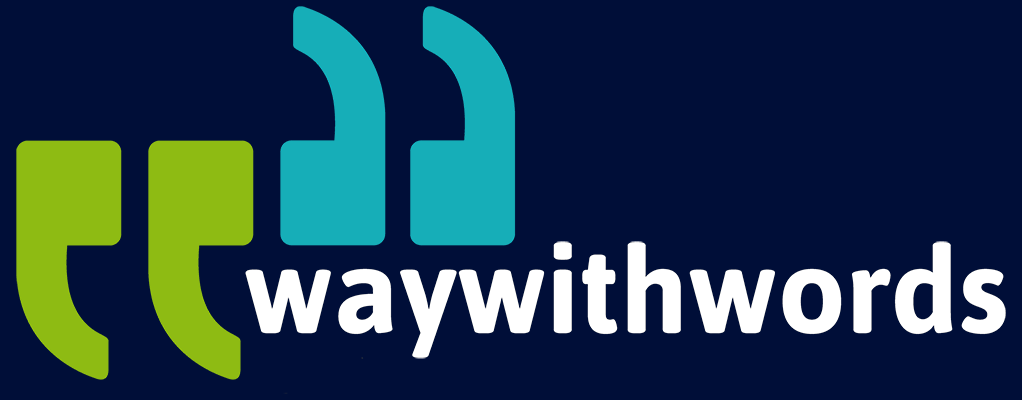What is a Gold-Standard Speech Dataset?
How Do You Define “Gold-Standard” in Speech Data?
Data quality determines the difference between innovative breakthroughs and frustrating failure. Whether developing speech recognition for voice assistants, training customer service bots, diversity in language requirements, or enabling real-time captioning for accessibility, the foundation of all these systems lies in carefully crafted datasets.
One term you’ll often hear from engineers, researchers, and consultants is the “gold-standard speech dataset” — a collection of audio recordings and transcripts held to the highest levels of quality, accuracy, and relevance. These datasets act as benchmarks for developing and evaluating machine learning models in automatic speech recognition (ASR) and broader speech processing domains.
But what exactly does “gold-standard” mean? Which datasets have earned this reputation? And how does this concept evolve as technologies mature?
This article explores these questions in depth, offering clarity for academic researchers, graduate students, machine learning practitioners, and anyone else working in the fast-moving world of speech data. We will also examine the emerging challenges and future directions of gold-standard corpora, including inclusivity, automation, and ethical considerations.
Defining “Gold-Standard” in Speech Data
A gold-standard speech dataset refers to a highly curated, peer-reviewed corpus of speech recordings and associated metadata designed to be used as a reference for training, testing, and benchmarking ASR systems.
Unlike ordinary datasets, gold-standard collections are developed through a meticulous, usually manual, process of transcription, validation, and documentation. These datasets are built with the aim of:
- Representing linguistic and speaker diversity
- Providing transparent metadata
- Achieving near-perfect transcription accuracy
- Enabling reproducible experiments in ASR and linguistic research
Key features of a gold-standard dataset include:
- Accurate, Human-Curated Transcriptions: Gold-standard transcriptions capture not only the spoken words but also disfluencies (such as “um” or “uh”), pauses, fillers, interruptions, and sometimes paralinguistic information like laughter or sighs. These are often time-aligned at the phoneme, word, or sentence level, ensuring usability for acoustic modelling and training.
- Comprehensive Metadata: This includes information about speakers (age, gender, regional accent), acoustic environments, devices used for recording, date and location, and even socio-economic background. Metadata supports research in sociophonetics and speaker variation modelling.
- Peer Validation: Datasets are reviewed or used by academic institutions and cited in peer-reviewed journals. This ensures trust, repeatability, and credibility. Quality control measures, such as inter-annotator agreement scores, are often reported.
- Standardisation: Data follows linguistic, phonetic, and technical standards that make the dataset interoperable with popular NLP or ASR toolkits. Examples include IPA phonetic labels or use of Praat-compatible formats.
- Manual Oversight and Iterative Correction: Errors, ambiguities, and edge cases are flagged and resolved manually by expert annotators. In many cases, annotations undergo multiple rounds of revision.
A gold-standard dataset is therefore far more than just data — it is a scientific instrument built for precision, generalisability, and longevity.
Examples of Gold-Standard Corpora
To understand what qualifies as gold-standard, it helps to look at real-world examples. Several benchmark audio corpora have shaped decades of speech research and remain foundational today.
1. TIMIT (Texas Instruments/MIT Acoustic-Phonetic Continuous Speech Corpus): Created in the 1980s, TIMIT is one of the earliest attempts to systematically compile a phonemically and lexically transcribed corpus of American English. Its enduring popularity comes from its precision and comprehensive annotations.
Size: Approximately 5 hours of audio from 630 speakers
Content: Each speaker reads ten pre-selected sentences covering all English phonemes
Use Cases: Acoustic modelling, phoneme classification, speaker recognition
TIMIT remains a vital benchmark audio corpus for validating model performance on phoneme-level accuracy and small-vocabulary tasks.
2. LibriSpeech: Based on audiobooks from LibriVox, LibriSpeech offers over 1,000 hours of clean read speech and is one of the most widely used datasets for training and evaluating ASR models.
Size: Over 1,000 hours
Strengths: High-quality recordings, minimal background noise, uniform sample rate
Applications: Model training for general-purpose ASR engines, domain adaptation, transfer learning
LibriSpeech is often a reference speech data set in academic benchmarks, particularly in deep learning models.
3. Switchboard: This dataset consists of thousands of recorded telephone conversations between strangers, introducing realistic dialogue, accents, hesitations, and spontaneous speech.
Size: Approximately 2,400 conversations (over 260 hours)
Content: Unscripted speech with varied regional dialects
Applications: Dialogue systems, speaker diarisation, conversational AI
Switchboard is vital for researchers seeking to simulate and improve real-world, spontaneous ASR applications.
Additional corpora worth mentioning include:
- Fisher Corpus: An extension of Switchboard with additional dialogues
- Common Voice (by Mozilla): A crowd-sourced initiative promoting linguistic diversity
- VoxForge: An open-source multilingual corpus, popular in open ASR community projects
- Corpus of Spontaneous Japanese (CSJ): Offers rich Japanese speech data across multiple genres
Criteria for Evaluating a Gold-Standard Dataset
To be considered gold-standard, a dataset must meet stringent criteria across linguistic, technical, and usability dimensions.
1. Coverage and Representativeness: A strong dataset must reflect a wide variety of speakers, languages, and acoustic conditions:
- Speaker Diversity: Age, gender, dialect, accent, and language background
- Speech Types: Read speech, spontaneous conversations, interviews, task-oriented dialogue
- Acoustic Conditions: Studio, outdoor, vehicle, noisy backgrounds, or phone quality
Without this range, models trained on the data may struggle to perform accurately in the real world.
2. Annotation Quality and Depth: Gold-standard annotations include:
- Orthographic transcriptions
- Phonetic and phonemic transcriptions
- Prosody annotations (intonation, pitch, stress)
- Time alignment at the word or phoneme level
- Speaker labels, turn-taking, and discourse markers
Transcriptions are reviewed and corrected by multiple annotators to ensure reliability and consistency.
3. Documentation and Transparency: Good datasets are supported by detailed documentation:
- Annotation guides and label schemas
- Technical specifications of audio files
- Metadata definitions and speaker profiles
- Benchmarking performance from existing models
- Licensing and ethical usage guidelines
Documentation is key to enabling reproducibility and responsible usage.
4. Accessibility and Format: The usefulness of a dataset also depends on how easily it can be obtained and used:
- Open availability or clear licensing terms
- Standard audio and transcript formats such as WAV, FLAC, JSON, or XML
- Hosting on public repositories or datasets portals
Datasets should be accessible enough to support broad experimentation while respecting contributor rights and privacy.

How Gold-Standard Sets Propel ASR Research
Gold-standard datasets play an essential role in the development and evaluation of automatic speech recognition systems.
1. Benchmarking Tools and Models: Researchers and developers need a consistent baseline for measuring model performance. Gold-standard datasets provide the reference test sets required for calculating:
- Word Error Rate (WER)
- Sentence Error Rate (SER)
- Phoneme Error Rate (PER)
These metrics are only meaningful when applied to a common benchmark.
2. Reproducibility and Peer Review: The scientific community places high value on reproducibility. Gold-standard datasets allow researchers to:
- Replicate published results
- Compare new models to existing baselines
- Evaluate changes in model architecture or training techniques
This standardisation facilitates collaborative research and accelerates progress in the field.
3. Training Foundational Models: Large datasets like LibriSpeech are often used to train general-purpose ASR models before fine-tuning on smaller, specialised datasets. Their quality and scale make them ideal for:
- Transfer learning
- Cross-lingual model development
- Building multi-purpose voice models
4. Driving Innovation in Real-World Applications: Gold-standard datasets are foundational for speech products used in everyday life. These include:
- Voice assistants
- Captioning tools
- Call centre transcription
- Accessibility technologies for the deaf and hard of hearing
Their use ensures that the resulting systems are accurate, inclusive, and robust in varied conditions.
Limitations and Evolving Definitions
Despite their value, gold-standard datasets are not without limitations. The field continues to evolve in how it defines and creates these resources.
1. Language and Accent Gaps: Many existing datasets focus primarily on English and, within that, specific varieties such as American or British English. This results in poor model performance for underrepresented languages and dialects, particularly in Africa, Asia, and indigenous communities.
2. Cost and Scale Challenges: Producing high-quality data is time-consuming and expensive. Licensing restrictions can also prevent use in commercial or non-academic settings. This can limit access for startups, non-profits, or researchers in low-resource contexts.
3. Ethical and Legal Concerns: Ethical considerations are increasingly important. These include:
- Obtaining informed consent
- Ensuring privacy and anonymity
- Fair representation of speakers from diverse backgrounds
- Future datasets must prioritise ethics alongside technical excellence.
4. Shifting Data Collection and Annotation Techniques: Technological advances have introduced semi-automated annotation methods that reduce human workload. These approaches are improving rapidly but still require manual oversight to reach gold-standard quality.
5. From Monolingual to Multilingual Standards: With global demand rising, gold-standard corpora must support multilingual, code-switched, and dialectal speech. This requires new collection strategies, cross-cultural collaboration, and adaptable annotation schemes.
Final Thoughts on Gold Standard Speech Dataset
A gold-standard speech dataset is not simply a large collection of recorded speech. It represents a carefully constructed, thoroughly reviewed, and widely trusted resource that underpins speech recognition, language understanding, and broader AI applications.
These datasets:
- Enable model benchmarking
- Ensure reproducibility in academic research
- Support multilingual speech technology
- Improve real-world voice-based systems
Yet, what qualifies as “gold-standard” is not fixed. As new needs arise, and technologies mature, our standards must evolve to reflect diversity, fairness, and modern use cases. By investing in inclusive, transparent, and high-quality data collection, we shape the future of speech technology for everyone.
Further Resources
TIMIT – Wikipedia Overview: Describes the TIMIT acoustic-phonetic continuous speech corpus, a foundational benchmark dataset in ASR research.
Way With Words: Speech Collection: Way With Words provides customised speech data collection services designed to meet evolving AI and ASR needs. Their solutions include multilingual recordings, domain-specific content, speaker diversity, and human-verified transcription accuracy. Their speech collections support machine learning model training, benchmarking, and real-world deployment.
